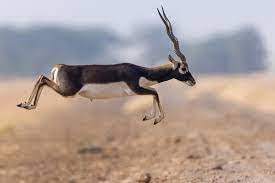Increase In Blackbuck Population:

A recent study conducted by the Indian Institute of Science (IISc) has shed light on how blackbuck in India has fared in the face of natural and human-induced challenges to their survival.
- Researchers found that an ancestral blackbuck population first split into two groups: the northern and the southern cluster.
- The eastern cluster even though geographically close to the northern cluster seems to have emerged from the southern cluster.
- The study shows that despite all odds, male blackbuck appears to disperse more than expected, thus contributing to gene flow in this species.
- Females, on the other hand, appear to stay largely within their native population ranges, which the researchers inferred from unique mitochondrial signatures in each population.
- The data also showed an increasing trend in blackbuck population numbers as compared to the recent past.
Blackbuck:
- It is a species of antelope native to India and Nepal.
- While males have corkscrew-shaped horns and black-to-dark brown coats, the females are fawn-coloured.
- The animals are mainly seen in three broad clusters across India the northern, southern, and eastern regions.
- It is widespread in the states of Rajasthan, Gujarat, Madhya Pradesh, Tamil Nadu, Odisha, and other areas throughout peninsular India.
- Protection status:
- IUCN Red List: Least concerned.
- Wildlife Protection Act of 1972: Schedule I
- CITES: Appendix III




